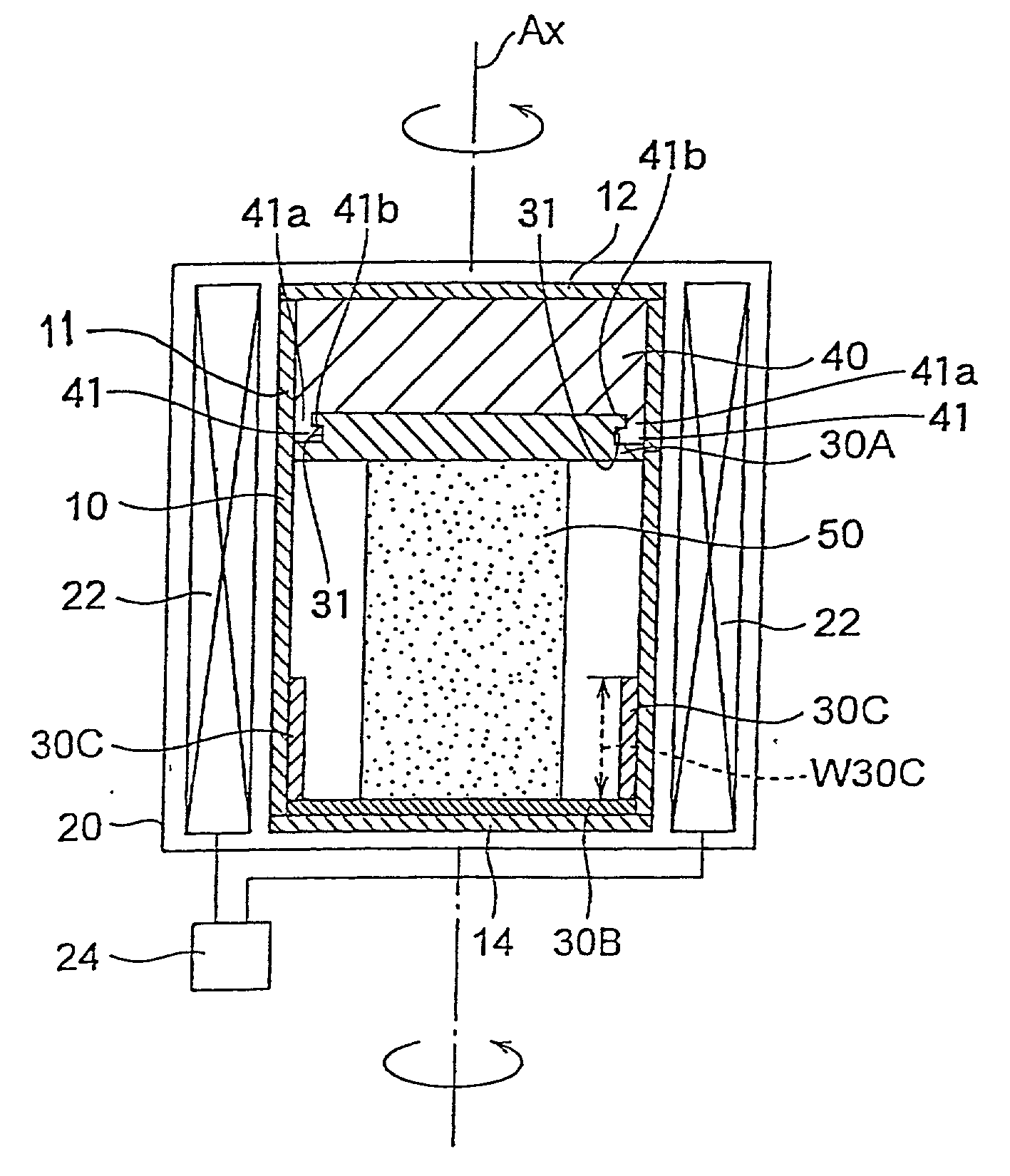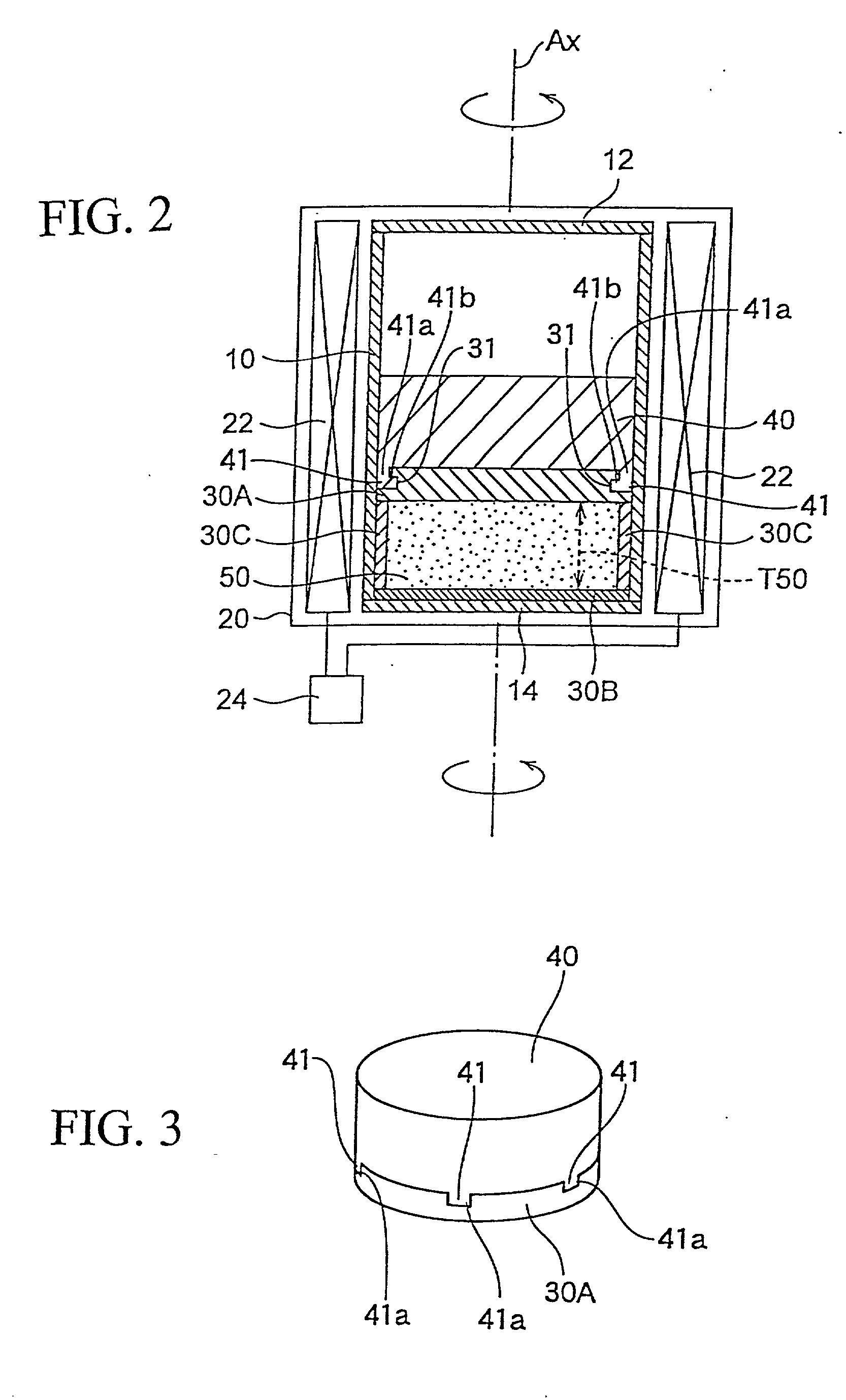Synthetic silica glass molding method, synthetic silica glass molding apparatus, and synthetic silica glass
a technology molding method, which is applied in the direction of glass pressing apparatus, glass making apparatus, manufacturing tools, etc., can solve the problems of shrinkage generated when the system is cooled down to room temperature, the conventional molding method suffers, and the residual gas bubbles of synthetic silica glass cannot be used as optical components
- Summary
- Abstract
- Description
- Claims
- Application Information
AI Technical Summary
Benefits of technology
Problems solved by technology
Method used
Image
Examples
working example 1
[0077] In Working Example 1, the crucible shape of the graphite molding vessel 10 was a cylindrical shape with a diameter of 220 mm, and a graphite molding vessel in which the engaging parts 41 and engaged parts 31 of the present invention were installed was used. Furthermore, inside this graphite molding vessel 10, elastic members 30A, 30B and 30C made of carbon fibers manufactured by Nippon Carbon Co. Ltd., sold under the trademark "CARBOLON FELT" (CARBOLON FELT is a registered trademark) were respectively disposed in the same manner as shown in FIG. 1.
[0078] Furthermore, the respective thicknesses of the carbon fiber elastic members 30B and 30C were 2.about.3 mm and 10 mm, and the bulk density was set at 0.1 g / cm.sup.3 in all cases. Moreover, the elastic member 30A was obtained by superimposing two elastic members similar to the elastic member 30B. In other words, the thickness of the elastic member 30A was set at 4.about.6mm.
[0079] Next, a cylindrical synthetic silica glass bulk...
working example 2
[0081] In Working Example 2, a synthetic silica glass was obtained by press-molding in the same manner as in Working Example 1, except that the treatment pressure was set at 0.6 MPa, the temperature was set at 1775.degree. C., and the retention time was set at 60 min.
working example 3
[0082] In Working Example 3, a synthetic silica glass was obtained by press-molding in the same manner as in Working Example 1, except that the crucible shape of the graphite molding vessel 10 was 160 mm square, and the treatment pressure was set at 0.2 MPa.
PUM
| Property | Measurement | Unit |
|---|---|---|
| porosity | aaaaa | aaaaa |
| temperature | aaaaa | aaaaa |
| thickness | aaaaa | aaaaa |
Abstract
Description
Claims
Application Information
 Login to View More
Login to View More - R&D
- Intellectual Property
- Life Sciences
- Materials
- Tech Scout
- Unparalleled Data Quality
- Higher Quality Content
- 60% Fewer Hallucinations
Browse by: Latest US Patents, China's latest patents, Technical Efficacy Thesaurus, Application Domain, Technology Topic, Popular Technical Reports.
© 2025 PatSnap. All rights reserved.Legal|Privacy policy|Modern Slavery Act Transparency Statement|Sitemap|About US| Contact US: help@patsnap.com



